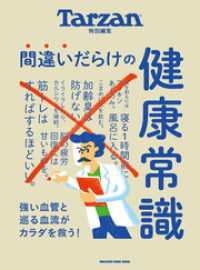Full Description
The Body As Property indicates that physical disfigurement functioned in biblical law to verify legal property acquisition, when changes in the status of dependents were formalized. It is based on the reality the cuneiform script, in particular, was developed in Sumer and Mesopotamia for the purpose of record keeping: to provide legal proof of ownership where the inscription of a tablet evidenced the sale, or transfer, of property. Legitimate property acquisition was as important in biblical law, where physical disfigurements marked dependents, in a similar way that the veil or the head covering identified a wife or concubine in ancient Assyrian and Judean societies.
This is primarily substantiated in the accounts of prescriptive disfigurements: namely circumcision and the piercing of a slave's ear, both of which were required only when a son, or slave, was acquired permanently. It is further argued that legal entitlement was relevant also to the punitive disfigurements recorded in Exodus 21:22-24, and Deuteronomy 25:11-12, where the physical violation of women was of concern solely as an infringement of male property rights.
Contents
CHAPTER ONE: INTRODUCTION
1:1 The Research Context and Questions
1:2 Methodological Pre-Requisites
1:3 Access to Cuneiform Law
1:4 This Profile of the Comparative Method
CHAPTER TWO: THE PRIESTLY REQUIRMENT OF CIRCUMCISION
2:1 Egyptian and Western Semitic Precedents
2:2 Circumcision and the Covenantal Promises to Abraham
2:3 As "Cut" or "Excision" in Genesis 17:14
2:4 A Substitution Rite for Child Sacrifice?
2:5 The Development of Circumcision as a Divine Seal
CHAPTER THREE: TALION IN BIBLICAL LAW AND NARRATIVE
3:1 Definitions and Parameters
3:2 Talion: The Divine Prerogative
3:3 The Requirement of Finite Talion
3:3:1 "A Life for a Life" in the Covenant Code
3:3:2 As Live Human Substitution
3:3:3 Napšate Umalla
3:3:4 "he will surely die": The Death Penalty in the Covenant Code
3:3:5 Financial Liability in the Covenant Code
3:3:6 Finite Talion: Leviticus 24:18 and 24:20
3:3:7 The Deuteronomic Revision: "Life for Life"
3:4 Reflective Talion and the Biblical "as if" Formulation
3:5 Divine Retribution and the Representation of Human Remains
3:6 Instrumental, Reflective and Symbolic Talion
3:6:1 "An Eye for An Eye" and the Misuse of Sight
3:6:2 "A Tooth for A Tooth:" Broken or Missing Teeth
3:6:3 "A Hand for A Hand," Or His Name and His Seed?
3:6:4 "You Shall Cut Off Her Palm"
3:6:5 "foot for foot": Or His Foot and Her Sandal?
3:7 Key Features of The Talionic Principle Summarized
CHAPTER FOUR: LEGAL ACQUISITION: THE SLAVE AND ISRAEL'S CULT PERSONNEL
4:1 Introduction
4:2 "Pierce His Ear with an Awl:" Exodus 21:6 and Deuteronomy 15:16
4:3 Marking the Israelite as the Property of His God
4:4 The Priestly Consecration of Levites & Israelites
4:5 The Gift of A Širkû as a "A Life for A Life"
CHAPTER FIVE: CONCLUSIONS
BIBLIOGRAPHY
-

- 電子書籍
- Tarzan特別編集 間違いだらけの健…
-

- 電子書籍
- ザ・シェフ(分冊版) 【第57話】 ぶ…
-

- 電子書籍
- コイビトは鬼の姫 キスカ連載版 第1話…
-

- 電子書籍
- 昏睡 黒いカルテ 2 静山社文庫
-

- 電子書籍
- グループのちからを生かす - 成長を支…



